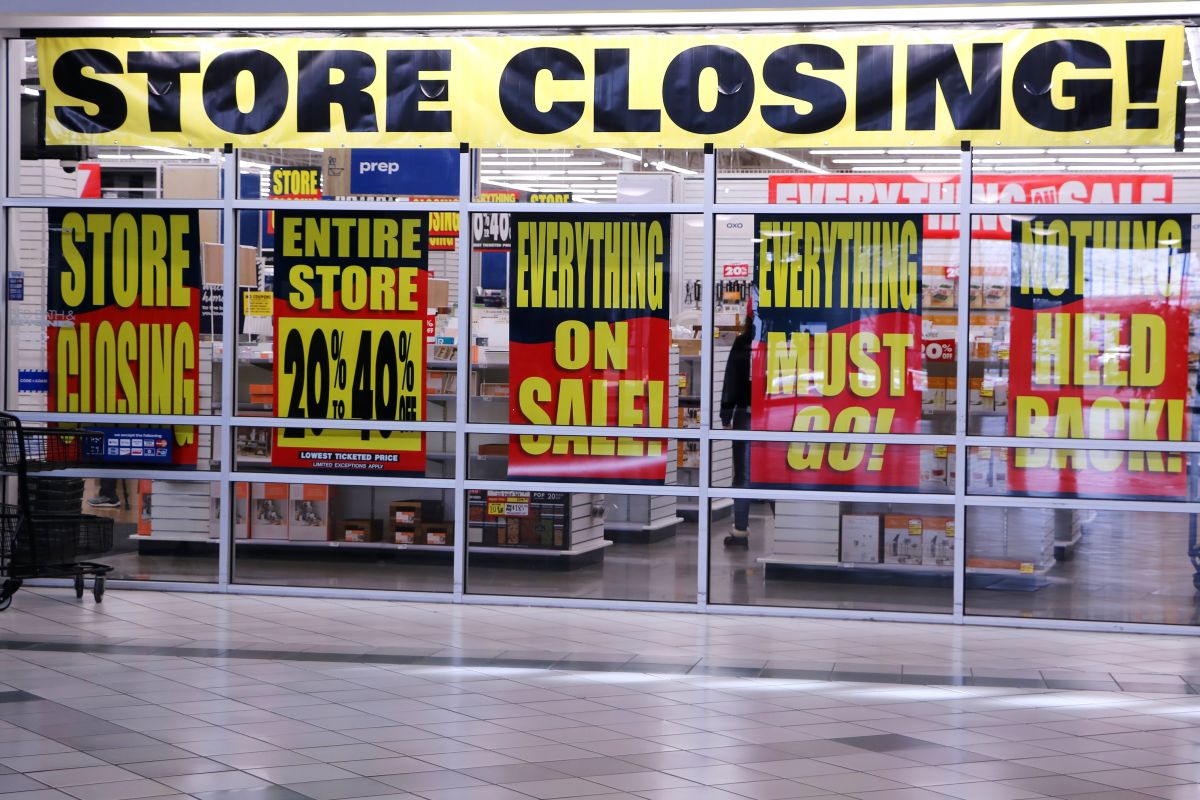
Retail store chains that file for Chapter 11 bankruptcy can suffer from damaged vendor relationships that cause empty shelves, limited access to capital needed to pay landlords and wages, and a damaged reputation that keeps shoppers away. It can also cause store closures, leaving customers in the lurch.
For these reasons, filing for bankruptcy reorganization is a retailer’s last option. Nevertheless, bankruptcy has become increasingly common because of fierce competition from e-commerce stores like Amazon (AMZN) -) and big-box retailers like Walmart (WMT) -) and Costco Wholesale (COST) -).
Shoppers can usually find the items they buy at those stores when retailers close because of bankruptcy. However, that task is more challenging when the retailer filing for Chapter 11 bankruptcy sells essential items not readily available elsewhere.

Brick-and-mortar retailers face stiff competition.
Sears had 700 stores when it filed for bankruptcy in 2018. Nowadays, it operates fewer than 20 stores after reemerging from Chapter 11 bankruptcy in 2022.
Bed Bath & Beyond had over 1,500 stores in 2018, but less than 300 when it went bankrupt earlier this year.
Related: Bankruptcy could force this popular retailer to close 500 stores
The success of large brick-and-mortar stores like Walmart and Costco and e-commerce alternatives like Amazon are a big reason behind those failures.
Walmart’s annual revenue surged from over $450 billion to $611 billion over the past decade. Costco’s revenue has more than doubled to $242 billion, and Amazon’s sales have increased from $74 billion to over $500 billion.
Those sales have come at the expense of other retailers less able to compete on price and convenience due to impaired balance sheets, buying power, or both.
A mountain of debt takes its toll
Rite Aid (RAD) -) is the latest retailer to declare bankruptcy. It has similarly lost sales because of increasing competition from these larger competitors.
Walmart is the fifth largest company, and Costco Wholesale is the 11th largest company ranked by prescription market share. Meanwhile, Amazon is pushing more deeply into pharmacy by offering online prescriptions.
Competition isn't the only reason why Rite Aid sought bankruptcy protection from creditors on Oct 15.
Rite Aid also filed for bankruptcy to insulate itself against a lawsuit that could cost it over one billion dollars to settle.
More bankruptcy:
- Well-liked retailer makes surprise return from bankruptcy
- This alarming statistic suggests a favorite retailer is in trouble
- These two big-name retailers face a huge bankruptcy risk
The Department of Justice filed a civil suit against Rite Aid in March, alleging pharmacists “repeatedly filled prescriptions for controlled substances with obvious red flags" and that it "intentionally deleted internal notes about suspicious prescribers.”
The company was already struggling before the Department of Justice alleged it inappropriately filled opioid prescriptions, contributing to the opioid epidemic.
Revenue at the 2,300-store retail pharmacy chain slumped 6% from one year ago during the June quarter, despite millions of shoppers relying on it to fill prescriptions or buy everyday items, like aspirin, vitamins, and toothpaste, every week.
Slumping sales couldn't have happened at a worse time for the company. Its interest expense on over $3.3 billion in debt has soared 35% to $65 million per quarter because of rising interest rates.
That extra burden, plus higher costs, increased theft, and goodwill write-downs on past acquisitions led to staggering losses exceeding $300 million in the quarter and full-year guidance for losses eclipsing $4.78 per share.
Those losses left Rite Aid with little wiggle room to negotiate a settlement with the Justice Department, given Walgreens Boots (WBA) -) and CVS Health (CVS) -) settled similar suits for $5.7 billion and $4.9 billion in the past year.
Rite Aid's decision to file for bankruptcy protection is based on restructuring plan negotiated with creditors that includes store closures.
“In connection with the court-supervised process, the Company will continue assessing its footprint and close additional underperforming stores. These efforts will further reduce the Company’s rent expense and are expected to strengthen its overall financial performance,” said Rite Aid in a statement announcing the bankruptcy news.
Rite Aid hasn't said which stores will close yet, but the Wall Street Journal previously reported the company could shutter up to 500 locations.
Stores that don't close will remain in operation via a $3.45 billion debtor-in-possession financing agreement with lenders.
“Rite Aid has received a commitment for $3.45 billion in new financing from certain of its lenders. This financing is expected to provide sufficient liquidity to support the Company throughout this process,” according to the statement.
The bankruptcy filing follows the receipt of a non-compliance letter from the New York Stock Exchange on Oct. 4 due to its shares trading below $1 and its market cap being below $50 million. The company was given a short window of time to get shares back above those thresholds before being delisted, further pressuring management into its decision.
Sign up to find out what stocks we're buying now (Rite Aid isn't one of them!)







